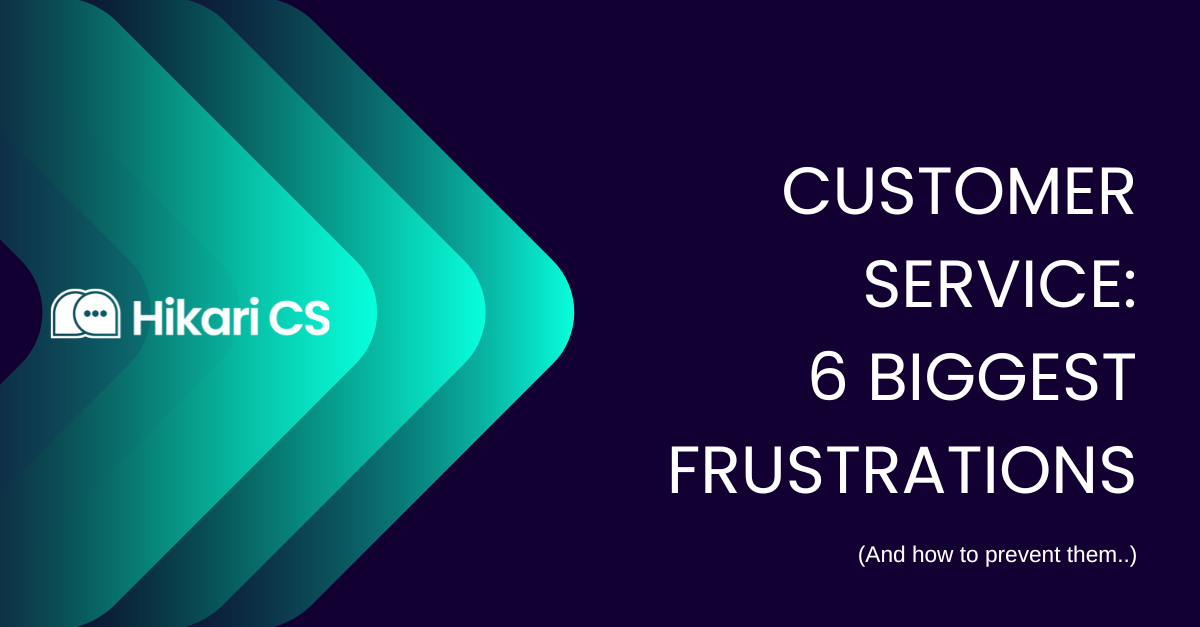Reduce Cart Abandonment with Live Chat in 2025
-
Best Practices
Hikari CS - Jan 16,2025

Cart abandonment continues to be a significant hurdle for eCommerce businesses, with abandonment rates hovering around 70%. In 2025, competition in the digital marketplace is fiercer than ever, and improving conversion rates has become a top priority. In this blog we'll discuss how to reduce cart abandonment.
One proven strategy for reducing cart abandonment is integrating live chat support into online stores. By offering real-time assistance, personalized customer engagement, and an overall enhanced shopping experience, live chat helps recover lost sales and boost customer satisfaction.
Understanding Cart Abandonment and Its Causes
Cart abandonment occurs when shoppers add items to their online cart but leave the website without completing the purchase. This issue can be attributed to several key factors:
- Unexpected Costs: Hidden fees, such as shipping or taxes, can deter customers at the last minute.
- Complicated Checkout Process: Lengthy or confusing checkout procedures often frustrate shoppers.
- Lack of Information: Customers may have unanswered questions about product details, return policies, or shipping times.
- Concerns About Security: Shoppers may abandon carts if they are unsure about the security of their payment information.
Addressing these pain points through real-time customer engagement via live chat can help businesses significantly reduce cart abandonment rates.
How Live Chat Support Helps Reduce Cart Abandonment
1. Providing Instant Assistance During Key Moments
Many customers abandon their carts due to confusion or unresolved queries. Live chat offers instant support at crucial points in the customer journey.
For example, if a shopper is unsure about product compatibility or shipping timelines, a live chat agent can step in and provide immediate clarity, improving the likelihood of purchase completion.
By proactively offering help, live chat can prevent potential drop-offs and turn hesitant shoppers into paying customers.
2. Enhancing Personalization in the Shopping Experience
Personalization is a major driver of online sales. Live chat enables businesses to deliver personalized interactions, such as tailored product recommendations or exclusive discount offers.
These personalized touches create a more engaging and memorable shopping experience, increasing customer trust and encouraging them to complete their purchase.
Additionally, by addressing individual concerns in real-time, businesses can foster a sense of connection and reliability, which is essential in today’s competitive market.
3. Simplifying the Checkout Process
A complex or error-prone checkout process is one of the most common reasons for cart abandonment. Live chat support can assist customers in real-time, guiding them through each step of the process and helping resolve any technical issues or errors.
For instance, if a shopper encounters a payment error or is unsure how to apply a discount code, a live chat agent can provide immediate assistance, ensuring a seamless checkout experience.
4. Building Trust and Credibility
Trust is a crucial factor in online shopping. Customers are more likely to complete a purchase when they feel confident in the brand’s credibility. Live chat helps build trust by providing an accessible and responsive support channel.
In 2024, with the rise of cyber threats and fraudulent websites, having real-time support available reassures customers that they are dealing with a legitimate and trustworthy business. This assurance can make all the difference in reducing cart abandonment rates.
5. Offering Proactive Engagement
Proactive engagement involves initiating conversations with customers before they seek help. Modern live chat tools can detect when a shopper is stuck or hesitant and trigger a chat invitation at the right moment.
This proactive approach can preemptively address concerns and prevent cart abandonment. For example, if a customer lingers on the checkout page for an extended period, a live chat prompt offering assistance can nudge them towards completing the purchase.
6. Capturing Valuable Customer Data for Retargeting
Even if a shopper doesn’t immediately complete a purchase, live chat can capture valuable customer information, such as email addresses and product preferences. This data can be used for retargeting campaigns, such as sending follow-up emails with personalized offers or reminders about abandoned carts.
By combining live chat with effective retargeting strategies, businesses can recover a significant portion of abandoned carts and drive additional sales.
7. Enhancing the Mobile Shopping Experience
With mobile commerce accounting for a growing share of online sales, optimizing the mobile shopping experience is critical. Live chat plays a key role in reducing cart abandonment on mobile devices by offering quick and easy access to support.
Mobile shoppers may find it difficult to navigate websites or fill out forms on smaller screens. Live chat eliminates these friction points by providing instant help, ensuring a smoother and more enjoyable mobile shopping experience.
8. Gaining Insights Through Real-Time Analytics
Modern live chat tools come with built-in analytics that allow businesses to track customer behavior, identify common pain points, and measure the effectiveness of their support efforts.
By analyzing chat transcripts and engagement data, businesses can continuously refine their strategies to further reduce cart abandonment. For example, if analytics reveal that a significant number of customers abandon their carts due to concerns about shipping costs, businesses can address this issue by offering free shipping or clearer cost breakdowns.
Best Practices for Implementing Live Chat
To maximize the effectiveness of live chat in reducing cart abandonment, businesses should follow these best practices:
- Ensure 24/7 Availability: Offering round-the-clock support ensures that customers in different time zones can receive assistance whenever they need it.
- Train Support Agents Thoroughly: Well-trained agents with in-depth product knowledge and excellent communication skills are essential for providing high-quality support.
- Integrate Chatbots for Common Queries: Using chatbots to handle frequently asked questions can free up human agents to focus on more complex issues, improving overall efficiency.
- Use Proactive Chat Invitations Wisely: Trigger chat invitations at key moments, such as when a customer hesitates on the checkout page, to provide timely assistance without being intrusive.
Conclusion
As eCommerce continues to evolve, businesses must prioritize strategies that enhance the customer experience and reduce cart abandonment. In 2024, live chat support stands out as a powerful tool for achieving these goals.
By offering instant assistance, personalizing interactions, and simplifying the checkout process, live chat can significantly improve conversion rates and drive revenue growth.
Investing in live chat technology and training support teams to deliver exceptional service can make a tangible difference in reducing cart abandonment. In a competitive eCommerce landscape, those who prioritize real-time customer engagement will be best positioned to succeed.
For businesses looking to enhance their customer support capabilities, Hikari CS offers comprehensive live chat solutions designed to boost conversion rates and improve the overall shopping experience. Visit Hikari CS to learn more about how live chat can transform your eCommerce strategy.


